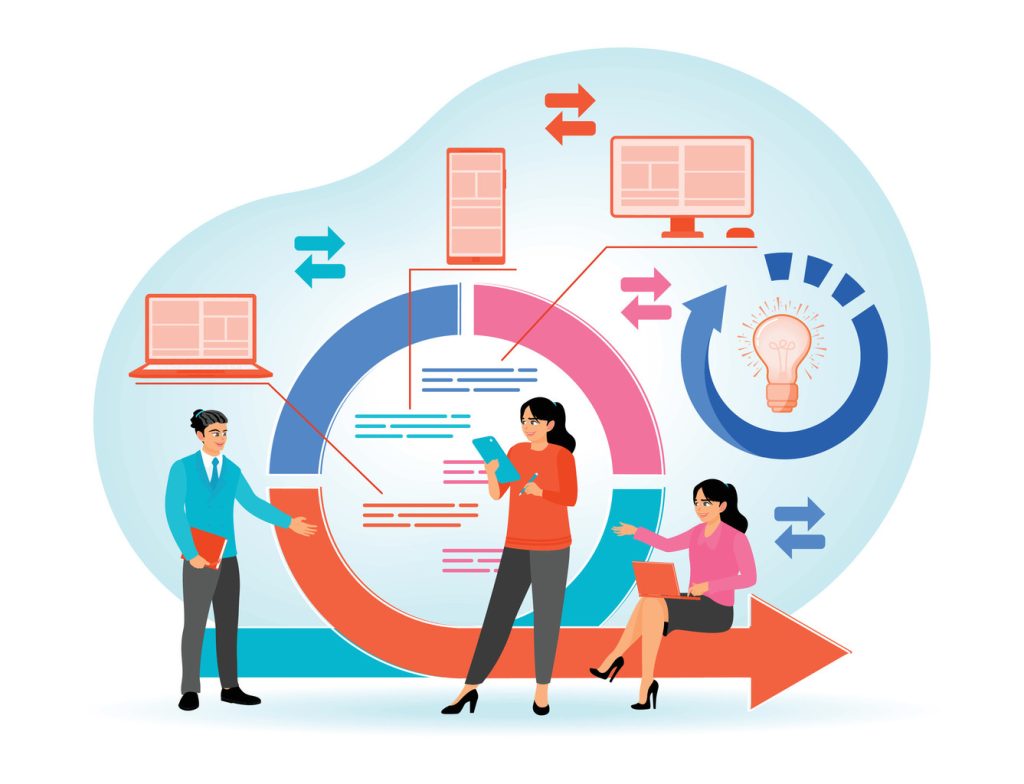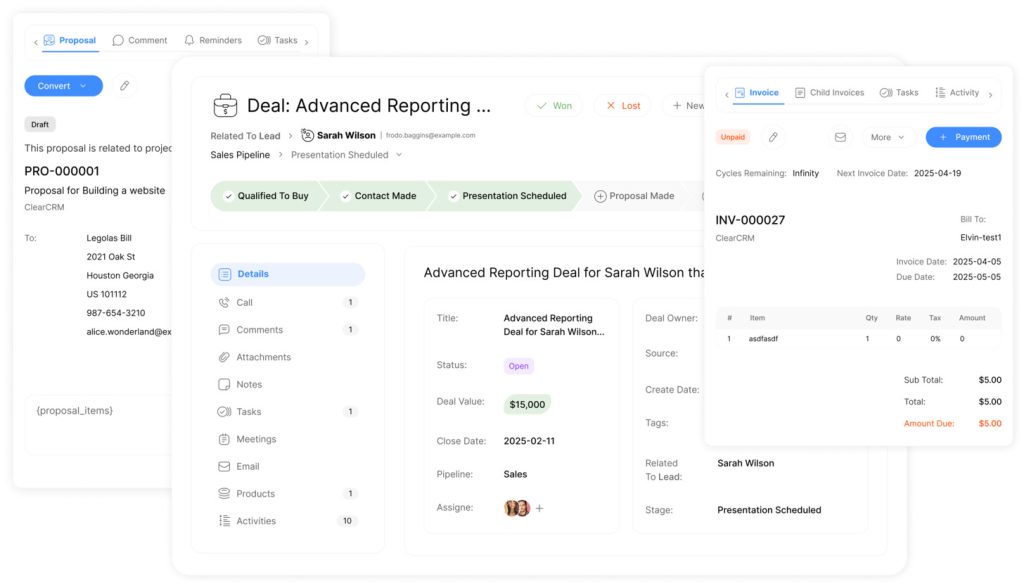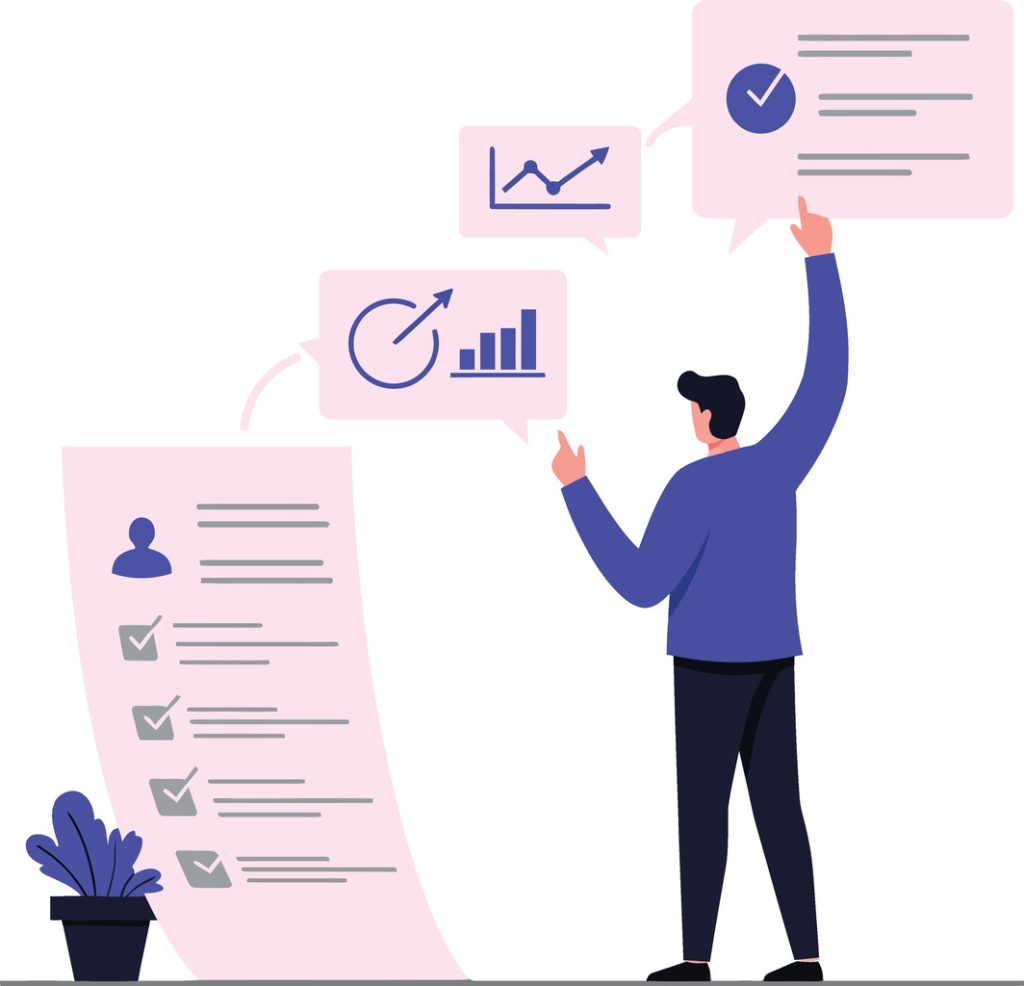Top Sales Software Solutions for Businesses Today

Modern companies face intense pressure to optimize revenue growth while managing complex customer journeys. Digital tools now play a central role in helping teams prioritize high-value leads, automate repetitive tasks, and close deals faster. Industry reports show organizations using advanced platforms experience up to 28% higher win rates compared to manual methods.
Leading systems like Dealfront simplify territory mapping and buyer intent tracking, while HubSpot centralizes communication across channels. These solutions eliminate fragmented workflows by unifying data analytics, email sequencing, and contract management. The result? Teams reclaim hours previously lost to administrative tasks—time better spent building client relationships.
Automation stands out as a game-changer, handling follow-ups, pipeline updates, and performance reporting without human intervention. Integration with CRM ecosystems ensures real-time visibility into team metrics and customer behavior. This precision allows leaders to allocate resources strategically, directly impacting bottom-line results.
Forward-thinking businesses prioritize platforms that deliver measurable outcomes, such as shorter sales cycles or improved lead-to-customer conversion rates. As competition intensifies, adopting intelligent tools becomes less optional and more essential for sustainable growth.
Key Takeaways
- Advanced digital tools accelerate prospecting and deal closure through unified workflows
- Platforms like Dealfront and HubSpot reduce manual effort with automated lead scoring
- CRM integration provides real-time insights for data-driven decision-making
- Top solutions prioritize ROI through shorter sales cycles and higher conversion rates
- Automated reporting frees teams to focus on high-impact relationship building
Understanding Sales Software: Definition and Key Concepts

Streamlining the path from lead to loyal client requires more than spreadsheets and guesswork. Modern platforms unify prospecting, communication, and analytics into cohesive workflows. These tools empower teams to act on insights rather than intuition.
What Is Sales Software?
Sales software refers to a suite of digital applications designed to optimize the entire customer acquisition cycle. It replaces fragmented manual processes with automated pipelines, ensuring no opportunity slips through cracks. For example, systems like ClearCRM centralize client interactions while tracking engagement patterns across channels.
| Traditional Methods | Modern Systems |
|---|---|
| Manual data entry | Automated lead capture |
| Disconnected spreadsheets | Unified management systems |
| Reactive decision-making | Predictive sales intelligence |
Core Functions and Applications
Key features include lead prioritization, real-time performance dashboards, and automated follow-up sequences. B2B teams use these tools to score prospects based on engagement levels, while retail brands automate personalized outreach. Analytics modules identify bottlenecks in conversion rates, enabling swift strategy adjustments.
Integrations with email platforms and calendars ensure reps never miss a follow-up. For instance, sales intelligence tools aggregate prospect data from public sources, helping teams tailor pitches effectively. This shift from reactive to proactive engagement directly impacts revenue growth.
Benefits of Implementing Sales Software in Business
Businesses navigating today’s competitive markets require tools that deliver measurable operational upgrades. Modern platforms transform fragmented workflows into cohesive systems, directly addressing inefficiencies that hinder growth.
Enhancing Efficiency and Productivity
Automated workflows eliminate time-consuming tasks like data entry and follow-up scheduling. For example, generative AI reduces manual input by 40%, according to industry reports. Teams regain hours weekly—time reinvested in strategic client outreach.
Key advantages include:
- Accelerated lead qualification through AI-driven scoring models
- Real-time pipeline visibility for faster decision-making
- Centralized communication hubs reducing cross-department delays
A recent survey reveals reps using these tools spend 17% less time on admin. This shift enables professionals to prioritize high-impact activities like personalized prospecting.
Improved Customer Relationship Management
Unified platforms aggregate client interactions across email, social media, and purchase histories. This 360-degree view lets teams anticipate needs rather than react to them. One retail brand saw a 22% uptick in repeat purchases after implementing behavior-tracking features.
Enhanced collaboration tools break down data silos between departments. Marketing and support teams access the same customer profiles, ensuring consistent messaging. As one operations director noted:
“Centralized data cut our response time by half while improving client satisfaction scores.”
These enhancements directly contribute to revenue growth. Companies using integrated systems report 31% higher ROI within six months of adoption.
The Role of Sales Automation in Streamlining Sales Processes
Efficiency gaps in customer acquisition often stem from outdated manual processes. Automation bridges these gaps by transforming repetitive actions into seamless workflows. Research shows teams using these tools reclaim 2.5 hours daily—time previously lost to administrative tasks.
Automating Repetitive Tasks
Daily routines like email sequencing and ClearCRM updates drain productivity. Intelligent systems handle these duties with precision. For example, AI-powered platforms auto-schedule follow-ups based on prospect behavior, reducing delays by 43%.
| Task | Manual Approach | Automated Workflow |
|---|---|---|
| Lead Follow-Up | Reps track responses in spreadsheets | Triggers send reminders after email opens |
| CRM Updates | Hourly data entry | Syncs calls/emails instantly |
| Meeting Scheduling | Back-and-forth emails | AI bots coordinate calendars |
Reducing Manual Work for Sales Teams
Automated lead scoring prioritizes high-potential accounts, letting teams focus on closing deals. Real-time notifications alert reps when prospects engage, enabling faster responses. As one operations manager noted:
“Our pipeline velocity increased by 30% after adopting behavior-triggered alerts.”
These systems also slash reporting labor. Dashboards auto-generate performance metrics, eliminating manual compilation. This shift allows professionals to dedicate 68% more hours to client strategy sessions—directly boosting conversion rates.
Exploring Top Features and Capabilities of Modern Sales Tools

Staying ahead in competitive markets demands tools that evolve with customer expectations. Today’s platforms go beyond basic tracking, offering predictive intelligence and adaptive workflows. These advancements empower teams to act faster while maintaining precision across every interaction.
Advanced CRM and Lead Management
Robust ClearCRM integration creates a single source of truth for customer interactions. Platforms like Salesforce aggregate purchase histories, communication logs, and social media activity into unified profiles. This depth of insight lets teams personalize outreach at scale.
| Traditional Lead Handling | Modern Systems |
|---|---|
| Manual lead assignment | AI-driven routing based on rep expertise |
| Static lead scoring | Dynamic scoring using real-time engagement |
| Generic follow-ups | Behavior-triggered nurturing sequences |
For example, ClearCRM’s approach reduces lead response time by 52% through automated prioritization. Customizable dashboards highlight high-potential accounts, ensuring no opportunity slips through.
Real-time Sales Analytics and Reporting
Instant access to performance metrics transforms decision-making. HubSpot’s analytics module tracks pipeline velocity, win rates, and rep activity simultaneously. Managers identify bottlenecks early—like deals stagnating in negotiation phases—and reallocate resources swiftly.
Key benefits include:
- Automated reports highlighting weekly conversion trends
- Forecasting models with 90%+ accuracy rates
- Custom alerts for sudden drops in engagement
One tech firm improved quarterly revenue by 18% after adopting predictive analytics. As their sales director noted:
“Real-time data lets us course-correct before issues impact targets.”
These tools turn raw numbers into actionable strategies, ensuring teams stay agile in shifting markets.
Integrating Sales Software with Your Existing Tech Stack
The true power of technology emerges when systems communicate without barriers. Disconnected tools create fragmented workflows, forcing teams to juggle multiple interfaces. Unified platforms bridge these gaps, transforming isolated apps into cohesive ecosystems.
Benefits of Seamless App Integrations
Leading solutions sync effortlessly with CRMs, email clients, and collaboration hubs. This connectivity eliminates manual data transfers—a major source of errors. For example, linking tools like Slack with Salesforce ensures deal updates reach all stakeholders instantly.
| Integration Type | Common Tools | Impact |
|---|---|---|
| CRM Sync | HubSpot, Zoho | Real-time lead tracking |
| Marketing Automation | Mailchimp, ActiveCampaign | Personalized campaign triggers |
| Communication | Zoom, Microsoft Teams | Auto-logged meeting notes |
One logistics company reduced order processing time by 35% after connecting their inventory system to a sales platform. As their operations lead noted:
“Integrated tools cut our quote-to-close cycle from 14 days to 9.”
Overcoming Data Silos with Unified Platforms
Centralized dashboards merge information from finance, marketing, and support teams. This transparency prevents conflicting client records and duplicate efforts. Marketing gains visibility into sales pipelines, enabling better campaign targeting.
Key outcomes include:
- Accurate forecasting using merged CRM and financial data
- Automated task assignments based on cross-departmental triggers
- Faster customer issue resolution through shared ticket histories
Breaking down silos isn’t just about efficiency—it reshapes how organizations collaborate. Teams aligned through shared data consistently outperform competitors in responsiveness and client satisfaction.
How Sales Software Enhances Sales Enablement Strategies

Effective enablement strategies separate thriving teams from those stuck in outdated practices. Modern platforms merge real-time analytics with adaptive training resources, creating a foundation for consistent growth. These systems transform raw data into strategic roadmaps, aligning every client interaction with organizational goals.
Empowering Reps with Actionable Insights
Dynamic dashboards highlight trends like prospect engagement drops or deal stagnation risks. For example, tools like HubSpot track email open rates and content usage patterns, guiding reps to focus on high-potential leads. One SaaS company saw a 27% increase in conversions after adopting behavior-based prioritization.
| Traditional Coaching | Insight-Driven Enablement |
|---|---|
| Generic training modules | Role-specific skill recommendations |
| Monthly performance reviews | Real-time deal health scores |
| Manual content searches | AI-suggested pitch materials |
As a sales director noted:
“Our reps now spend 73% less time prepping for meetings thanks to automated battle cards and competitor analysis.”
Personalizing Customer Engagement
Platforms analyze past purchases and communication histories to suggest tailored outreach strategies. A retail brand achieved a 19% lift in repeat orders using AI-generated product recommendations. Automated workflows trigger personalized follow-ups based on client actions—like sending discount offers after cart abandonment.
Key outcomes include:
- 45% faster response times through predictive engagement alerts
- 33% higher email reply rates with customized messaging
- Centralized content libraries ensuring brand consistency
By integrating training materials with CRM data, teams maintain relevance across every touchpoint. This alignment helps build lasting relationships while accelerating individual deal cycles.
Review of Sales Automation: Speeding Up the Sales Cycle
Accelerating revenue growth hinges on eliminating friction in buyer-seller interactions. Automation tools address delays that plague traditional workflows, particularly in critical stages like follow-ups and client outreach. Studies show teams using these solutions close deals 34% faster by minimizing manual bottlenecks.
Streamlined Communication and Follow-ups
Automated email sequences ensure prospects receive timely responses after initial contact. Platforms like HubSpot trigger reminders when leads open messages or visit pricing pages. One logistics firm reduced response gaps from 48 hours to 15 minutes using behavior-based alerts.
| Traditional Follow-Up | Automated Approach |
|---|---|
| Manual email drafting | Pre-built templates with dynamic fields |
| Missed call-backs | Click-to-call integration with CRM logs |
| Inconsistent timing | Scheduled sequences based on engagement |
Real-time task assignments prevent deals from stalling. When a prospect downloads a case study, systems like Pipedrive automatically notify reps to share relevant success stories. This precision cuts negotiation phases by an average of 6 days.
“Automated triggers helped us boost follow-up completion rates from 62% to 89% in three months,” notes a tech company’s sales director.
Predictive analytics further refine the process. Tools prioritize accounts showing high intent signals—website visits, content downloads, or demo requests. Teams focusing on these leads report 22% higher close rates compared to manual targeting.
By handling routine tasks, automation frees professionals to craft personalized strategies. A healthcare SaaS provider redirected 260 annual hours per rep toward client consultations, directly improving renewal rates. These efficiencies make sales cycles more predictable while strengthening buyer relationships.
Top Sales Software Features to Look Out For

Choosing the right platform transforms how teams convert prospects into loyal customers. Modern solutions combine robust functionality with intuitive design, directly addressing bottlenecks in conversion rates and team collaboration.
Key Functionalities for Effective Pipeline Management
Drag-and-drop pipeline builders let teams visualize deal stages while adjusting workflows on the fly. Real-time tracking features flag stalled opportunities, prompting timely interventions. For example, platforms like Pipedrive automatically prioritize leads showing high engagement through AI-driven scoring models.
| Traditional Pipeline Handling | Modern Solutions |
|---|---|
| Static phase categories | Customizable deal stages |
| Manual progress updates | Auto-populated activity logs |
| Quarterly revenue forecasts | Dynamic predictions using live data |
Advanced lead generation tools identify high-intent prospects across channels. One SaaS company increased qualified leads by 29% using built-in web form analytics. These systems also automate follow-ups based on prospect behavior—like sending case studies after whitepaper downloads.
Integration, Customization, and User-Friendliness
Seamless connections with email platforms and project tools eliminate duplicate data entry. Zapier integration, for instance, syncs new leads with marketing automation systems instantly. As a sales operations manager noted:
“Custom dashboards reduced our onboarding time from three weeks to four days.”
Key outcomes from intuitive design include:
- 45% faster adoption rates among non-technical users
- Role-specific views that simplify complex data sets
- Centralized document storage for consistent messaging
Platforms balancing advanced capabilities with clean interfaces see 73% higher user retention. This harmony between power and accessibility ensures teams maximize ROI without steep learning curves.
Product Roundup: Best Sales Software Tools for Sales Teams
Selecting the right tools can redefine how organizations convert prospects into revenue. Leading platforms combine precision targeting with adaptable workflows, addressing unique challenges across industries. This roundup highlights solutions proven to accelerate results while minimizing operational friction.
Highlights of Leading Platforms Like Dealfront and Salesforce
Dealfront excels in B2B scenarios with its territory mapping and intent detection features. Users report 37% faster lead qualification cycles due to real-time web visitor tracking. Its automated alerts notify teams when high-value accounts engage with content, enabling timely outreach.
Salesforce dominates enterprise environments with customizable dashboards and AI-driven forecasting. One manufacturing firm reduced proposal drafting time by 52% using its document automation tools. The platform’s AppExchange ecosystem supports 6,000+ integrations, making it ideal for complex tech stacks.
| Platform | Strengths | Drawbacks | |
|---|---|---|---|
| Dealfront | Granular account insights | Budget-friendly pricing | Limited CRM customization |
| Salesforce | Advanced analytics | Scalable architecture | Steep learning curve |
| HubSpot | Intuitive interface | Free tier available | Premium features require upgrades |
Comparing Pros and Cons Across Different Solutions
HubSpot stands out for startups needing rapid deployment. Its free CRM handles basic lead management, while paid tiers add email sequencing and predictive scoring. However, advanced automation requires premium subscriptions—a hurdle for bootstrapped teams.
Platforms like Pipedrive prioritize pipeline visualization, helping reps track deal progress at a glance. Users achieve 29% shorter sales cycles through drag-and-drop stage adjustments. Yet, its reporting capabilities lag behind enterprise-grade alternatives.
“We closed 18% more deals quarterly after switching to a platform matching our deal complexity,” shares a SaaS company’s revenue director.
Decision-makers should prioritize tools offering native integrations with existing systems. Compatibility reduces training time and ensures seamless data flow between departments—critical for maintaining momentum in fast-paced markets.
Harnessing Sales software to Optimize Your Pipeline
Eliminating friction in client acquisition starts with aligning every pipeline stage to measurable outcomes. Advanced platforms now automate repetitive tasks while surfacing actionable insights—transforming how teams convert interest into revenue.
Maximizing Productivity with Automated Workflows
Automated workflows ensure prospects advance through the funnel without manual nudges. For example, platforms trigger follow-ups when leads download pricing guides or revisit service pages. One SaaS provider reduced cycle times by 34% using behavior-based alerts.
Key strategies include:
- Dynamic lead scoring prioritizing high-intent accounts
- CRM-synced task assignments preventing stalled negotiations
- Real-time dashboards flagging bottlenecks in approval phases
Integration with communication tools like Slack ensures that updates reach reps in real time. A logistics company slashed quote-to-close timelines by 41% after syncing their platform with inventory systems. As their sales director noted:
“Automated nurturing sequences doubled our demo-to-proposal conversion rate in six weeks.”
Data-driven platforms also refine forecasting accuracy. Teams using predictive analytics report 28% fewer missed quotas due to early warning signals. This precision lets professionals allocate resources where they’ll impact revenue most—without guesswork.
Essential Considerations When Choosing Sales Software
Selecting tools that align with operational goals requires careful evaluation of core capabilities and adaptability. Decision-makers must balance immediate needs with long-term scalability, ensuring platforms grow alongside evolving workflows.
Evaluating Features and Capabilities
Prioritize platforms offering dynamic lead scoring and ClearCRM flexibility. For example, systems like HubSpot automate pipeline updates while allowing custom fields for industry-specific data. Assess whether solutions handle multi-channel engagement tracking or lack critical automation triggers.
| Core Requirement | Basic Tools | Advanced Platforms |
|---|---|---|
| Lead Management | Manual tagging | AI-driven prioritization |
| Reporting | Static exports | Real-time dashboards |
| Integration Depth | Limited API access | Pre-built app connectors |
Scalability matters—tools should support adding users, custom workflows, and new markets without costly migrations. A healthcare startup improved forecast accuracy by 41% after adopting modular systems that expanded with their client base.
User Experience and Integration Considerations
Intuitive interfaces reduce training time and drive faster adoption. Test platforms using free trials to gauge navigation ease—can reps locate contact histories in three clicks or fewer? Seek feedback from teams using similar tools. One sales director noted:
“Switching to a system with drag-and-drop pipelines cut our onboarding period from 14 days to 48 hours.”
Key integration checks include:
- Compatibility with existing management systems like ERP or marketing tools
- Automated data syncing to prevent manual entry errors
- API availability for custom workflow builds
Platforms like Zoho CRM excel here, offering 1,000+ native integrations. Teams using connected ecosystems report 29% fewer data discrepancies and 18% faster deal closures.
Future Trends in Sales Software and Marketing Automation

The next wave of customer acquisition tools will redefine how businesses predict and respond to market shifts. Platforms now leverage adaptive learning to refine strategies autonomously, analyzing terabytes of behavioral data to anticipate buyer needs before they arise.
Emerging Technologies and AI Advancements
AI-driven platforms like Salesforce Einstein analyze historical deal patterns to forecast outcomes with 92% accuracy. These systems evolve through machine learning, adjusting scoring models as markets fluctuate. For example, conversational AI now drafts personalized outreach emails by scanning prospect LinkedIn activity and recent earnings calls.
| Current Capabilities | Future Innovations |
|---|---|
| Basic lead scoring | Neural networks predicting deal risks |
| Manual campaign setup | Self-optimizing ad spend algorithms |
| Static reporting | Real-time anomaly detection alerts |
Marketing and sales tools are merging into unified ecosystems. HubSpot’s latest updates sync content engagement metrics with CRM pipelines, enabling teams to trigger nurture sequences when prospects revisit pricing pages. One SaaS company boosted conversions by 18% using this cross-channel approach.
“Platforms will soon auto-generate battle cards using competitor news alerts and customer sentiment analysis,” predicts a Salesforce product lead.
Three developments will dominate:
- Predictive intelligence automating quota allocation based on rep performance trends
- Voice analytics detecting customer hesitations during calls to suggest real-time rebuttals
- Blockchain-secured contract management reducing legal review cycles
Businesses ignoring these shifts risk falling behind. Early adopters of AI-enhanced platforms report 31% faster decision-making cycles—a gap competitors struggle to close.
Tips for Maximizing ROI with Top Sales Software Solutions
Teams aiming to amplify results must look beyond basic tool adoption. Strategic alignment of features with daily workflows unlocks hidden efficiencies. Focus on platforms offering real-time analytics and customizable automation to close deals faster.
Practical Strategies for Sales Teams
Automated workflows reduce time spent on repetitive tasks like email follow-ups. Pre-built templates with dynamic fields ensure consistent messaging while allowing personalization. For example, tools triggering alerts when prospects revisit pricing pages see 38% faster response rates.
| Traditional Approach | Optimized Strategy |
|---|---|
| Manual follow-up scheduling | Behavior-triggered email sequences |
| Generic outreach | AI-generated content recommendations |
| Static lead lists | Dynamic scoring based on engagement |
“Custom dashboards helped our team prioritize high-potential accounts, cutting follow-up time by 52%,” shares a tech firm’s revenue lead.
Measuring Success and Performance
Built-in reporting tools track metrics like lead-to-customer conversion rates and email open trends. Weekly reviews of these insights enable swift strategy adjustments. Key benchmarks include:
- Deal cycle length reductions (aim for 15-20% quarterly)
- Customer lifetime value improvements via upsell tracking
- Team productivity gains measured through task completion rates
Platforms like HubSpot offer A/B testing modules to refine campaign effectiveness. One e-commerce brand boosted reply rates by 27% by testing subject lines. Regular KPI audits ensure tools evolve with shifting market demands.
Conclusion
In today’s fast-paced market landscape, businesses need more than basic tools to thrive. Advanced platforms unlock measurable outcomes—shorter deal cycles, higher conversion rates, and stronger client relationships. The right solution transforms raw data into actionable insights, empowering teams to prioritize high-impact opportunities.
Key benefits include automated workflows that eliminate manual tasks and real-time analytics for smarter decision-making. Platforms like Dealfront and HubSpot demonstrate how integrated systems boost efficiency while maintaining personalized engagement. For decision-makers, adopting these tools isn’t optional—it’s critical for staying competitive.
Investing in modern technology directly impacts revenue growth. Teams using intelligent systems report faster deal closures and improved customer retention. Now is the time to evaluate platforms that align with your operational goals and market demands.
Take the next step: explore solutions offering scalable automation, CRM flexibility, and predictive insights. By choosing wisely, businesses position themselves to outpace rivals and achieve sustainable success. Start optimizing your strategy today—transform how you connect, engage, and grow.

